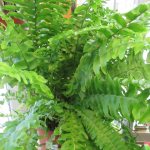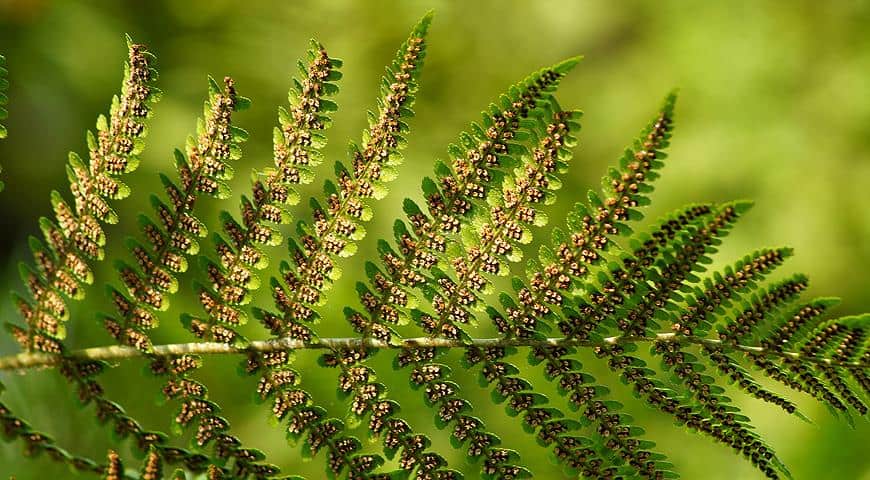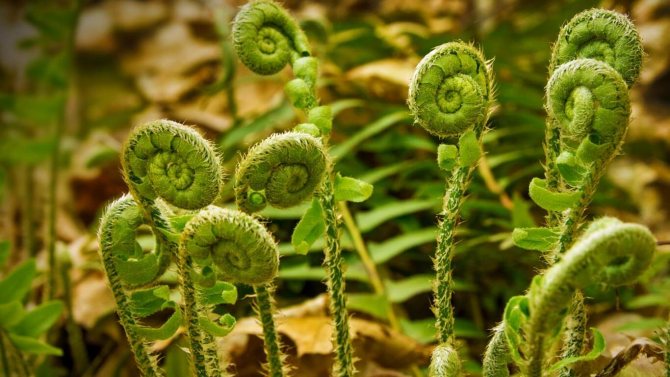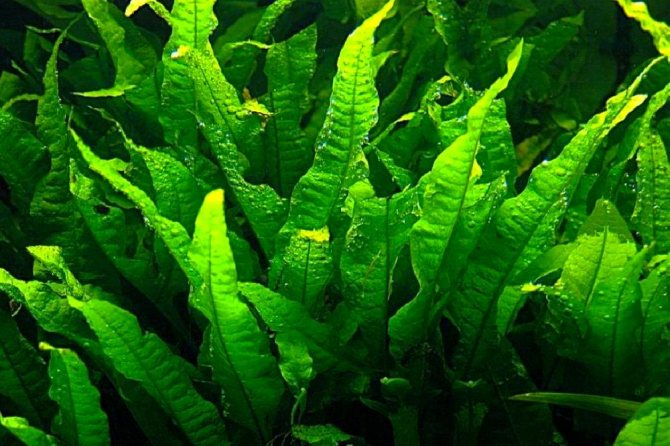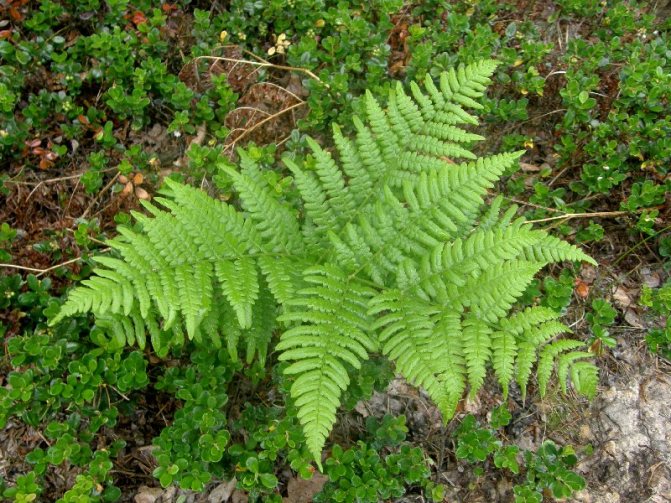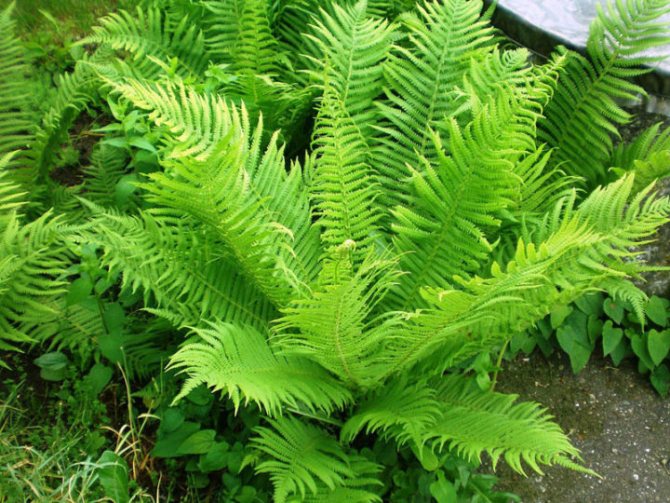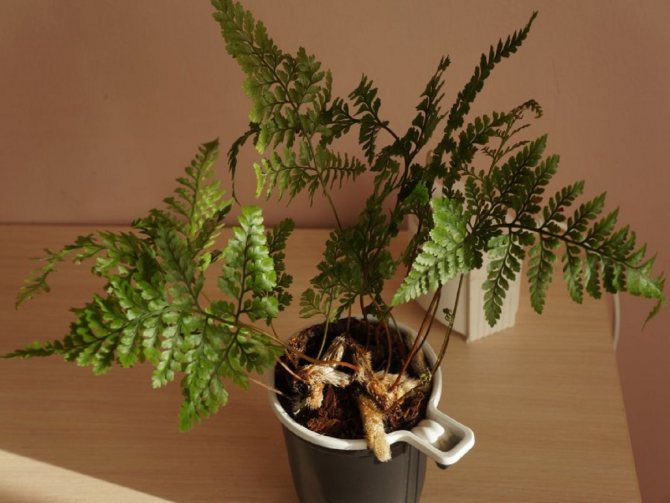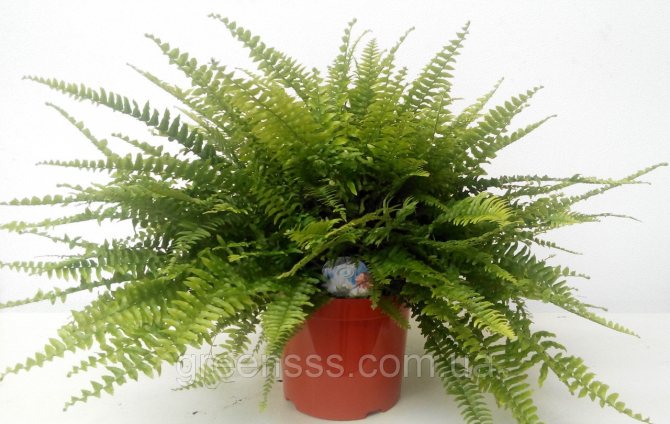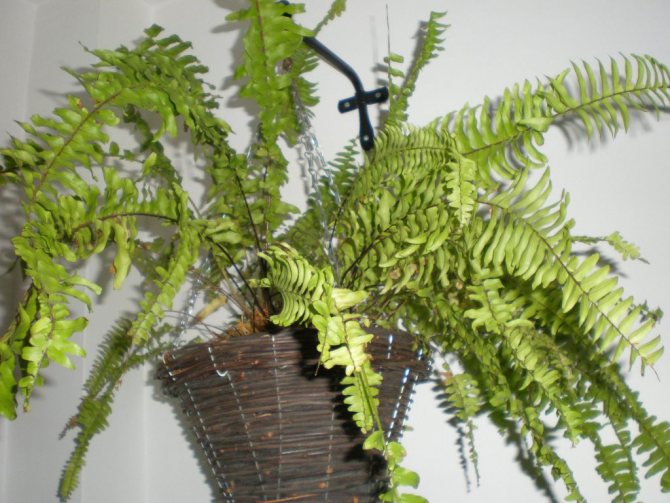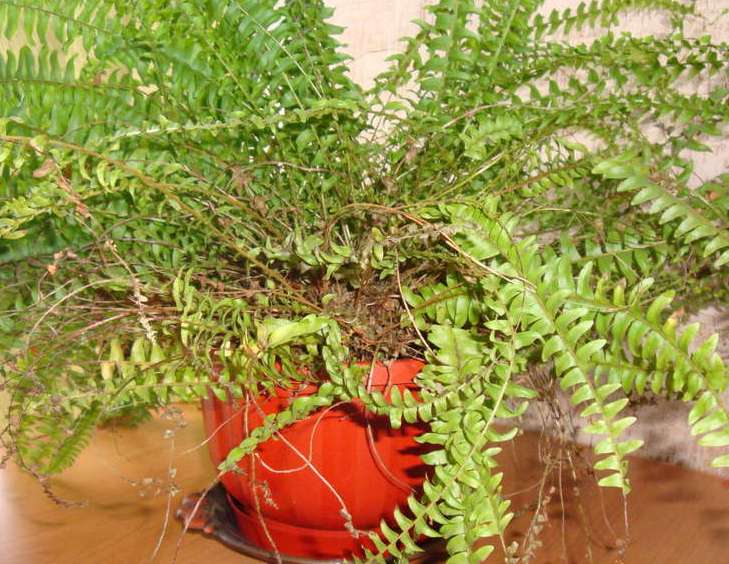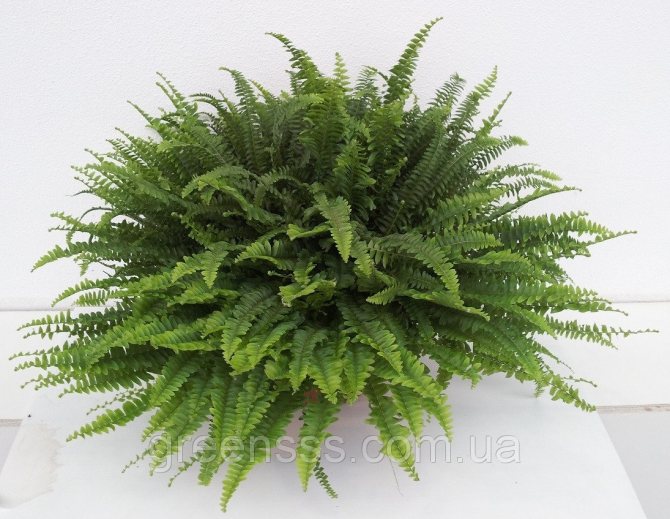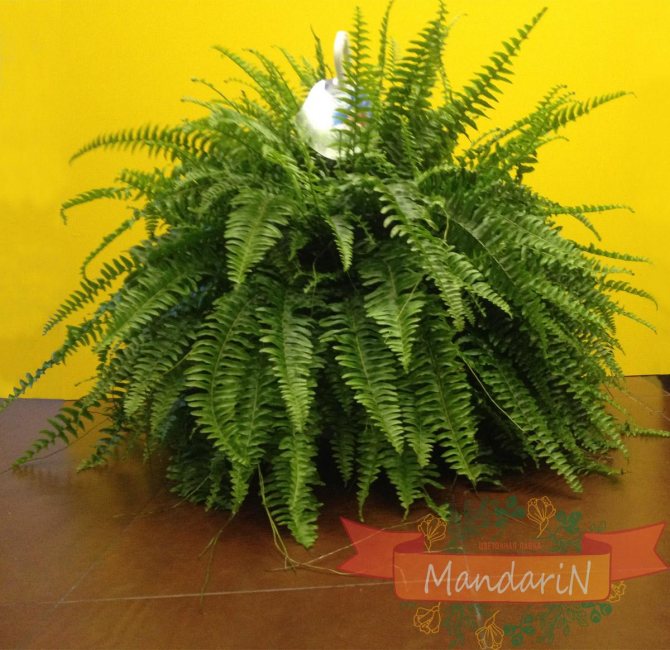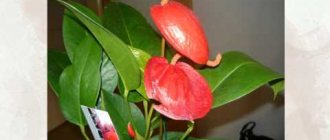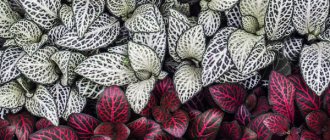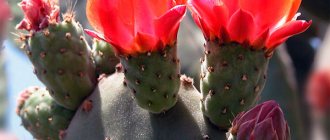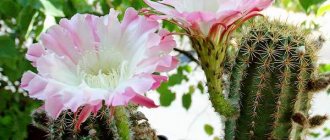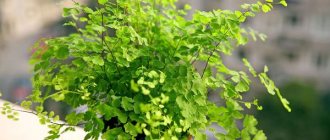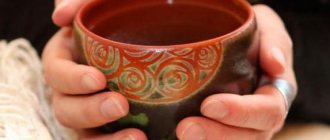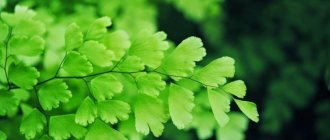The fern plant has at least 20 thousand species according to the botanical classification and is of very ancient origin. Only a few of its varieties have adapted to home conditions, nephrolepis is especially popular with flower growers.
Nephrolepis
Other types of ferns that are often found in living quarters: maidenhair, cytomium, golden polypodium. Their appearance is similar to their prehistoric ancestors precisely nephrolepis. This fern is attractive not only for its decorative appearance, but also for its not exacting care.
Homeland of the indoor fern America, Australia, South East Asia and Africa. Fern naturally grows in shady, humid tropical forests, it can be a terrestrial or epiphytic plant. For this reason, the plant loves warmth and moisture.
You may be interested: Aspirin for indoor flowers in winter
Description
Representatives of the order of ferns belong to the department of higher plants. They have conductive tissue that delivers substances and water to all organs. Plants consist of root, stem and well-developed leaves. It has no flowers and seeds. We will consider in more detail the names of the fern organs below. These plants can be found almost anywhere in the world. However, their great species diversity is concentrated in the humid tropics. In size, these plants are both very small (a few centimeters) and quite tall and powerful (up to 20 meters).
Fern organ and structure names
Roots. They are adventitious in this plant. This means that the root practically does not develop; instead, shoots and leaves are formed. The stems are quite diverse, both in terms of internal structure and appearance. In some ferns, they can be creeping or curly, but most often they are ordinary straight lines. Quite large leaves extend upward from the stem. They perform the functions of sporulation and photosynthesis. Sporophylls ripen on the underside of the leaves. Once on the ground, the "female" spores grow into buds, which are small heart-shaped plates. As a rule, their diameter is no more than one centimeter. On the surface of the plates are the so-called "female" genitals. From male spores, micro-outgrowths are formed, in which sperm mature. They are carried by the wind, hitting trees, grass, etc. After maturation of the shell and its rupture, the "male" seeds appear in the external environment. With water, the sperm enters the female germ. This is how a new plant appears. In this case, the heart-shaped overgrowth withers and dies off. Some ferns can reproduce vegetatively. In this case, new plants are formed on old leaves lying on the ground. Over time, they will take root in the soil and germinate.
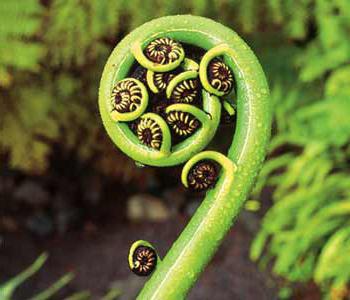
Ferns have no cambium. That is why their strength and growth are limited, and growth rings do not form on the stem. These are the unique plants - ferns.
Caring for the nephrolepis fern at home
Indoor ferns are quite whimsical pets. To keep in good shape, they need care and appropriate conditions for healthy development. This will be discussed below.
Also read: Guest from the Land of the Rising Sun: Growing Japanese Aucuba at Home
Lighting, temperature, humidity
Diffuse light or partial shade is best suited for indoor nephrolepis varieties, the leaves do not tolerate direct sun exposure. If the plant is kept on a windowsill, it is best to choose the orientation to the north, west or east. Ferns reveal all their beauty in their natural habitat with a daylight duration of up to 16 hours a day, so a knowledgeable pet owner will always take care of an additional source of lighting. Fluorescent lamps are quite suitable for nephrolepis, therefore, they feel good in shopping or business centers with an increased level of artificial insolation.
In summer, the most comfortable temperature for nephrolepis is between 20 and 24 ºC. If the climate is hotter, then the fern leaves need to be sprayed more often and the plant will withstand higher temperatures without loss. In winter, during the so-called rest period, it is important not to keep nephrolepis near batteries or heat gunsits normal temperature in winter is 15 ºC.
Watering and spraying foliage is one of the main care procedures for nephrolepis to maintain a high humidity regime. These manipulations should be carried out in the volumes appropriate for the season all year round. In this case, it is impossible to fill in an earthen lump, it is desirable to carry out loosening for better aeration of the soil.
How to transplant a fern after purchase (video)
Soil and flower pot
Many people buy ready-made acidic soil mixture for ferns (pH level 4.5-5.5), but you can independently prepare cultivated soil for nephrolepis. We choose a light composition, consisting of peat, greenhouse and coniferous land (proportion 1: 1: 1). Bone meal as a natural fertilizer will perfectly complement the elemental composition of the soil (5 grams of flour per 1 kg of soil). Whatever soil mixture you choose in the end, it is important to provide the fern with good drainage from expanded clay.
Usually varieties of nephrolepis have a shallow root system, therefore it is better to take a pot wide and low. A plastic pot is better suited for transplanting, as it retains moisture longer than an earthen container. With a long stay in one pot, the clay version is also well suited, you just need to observe the stable watering regime.
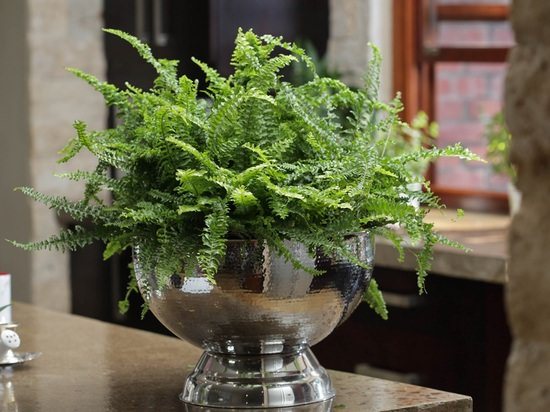

Usually, nephrolepis varieties have a shallow root system, therefore it is better to take a pot wide and low
Fern watering
The irrigation regime for nephrolepis should be organized in direct proportion to the ambient temperature - the hotter the climate, the more frequent and abundant irrigation should be. The top layer of the earthen coma should dry out before the next watering - in winter this rule is especially important to observe, since in the winter dormancy mode, nephrolepis should not be watered abundantly. In the summer, along with more frequent watering, foliar spraying will be very useful. And at least once a month it is worth organizing a shower for the fern.
Also read: At the behest of the pike: we grow sansevieria at home
For year-round irrigation, water should be used only at room temperature, it must also be defended or filtered water should be used.


The irrigation regime for nephrolepis should be organized in direct proportion to the ambient temperature - the hotter the climate, the more frequent and abundant watering should be
Plant feeding
To keep your fern in its best shape, it should be fertilized with complex preparations from the line of fertilizers for ornamental plants. The manufacturer's dosage indicated on the package can be safely reduced several times. In the period from March to September, it is recommended to apply top dressing 3-4 times during each month. If wintering is relatively cool, then nephrolepis can be left without feeding for the rest of the year. Otherwise, when the climate is also hotter in winter than in the temperate zone, you can continue top dressing once a month.
Disease prevention
Of the most common fern diseases, in which it very quickly loses its visual appeal, can be called:
- spots on foliage. Most likely, these are burns from direct sunlight on the leaves;
- withering and dropping wai (leaves). Here you need to exclude low humidity (spray, exclude the proximity of the plant with heating devices, install an additional container filled with water next to the pot);
- the plant is weakening... Perhaps the reason is the oversaturation with fertilizers in the autumn-winter period, when there is no longer a need to fertilize nephrolepis;
- sluggish growth. Perhaps the soil is not suitable in composition, it is moisture-proof and heavy, which interferes with the development of a strong rhizome.
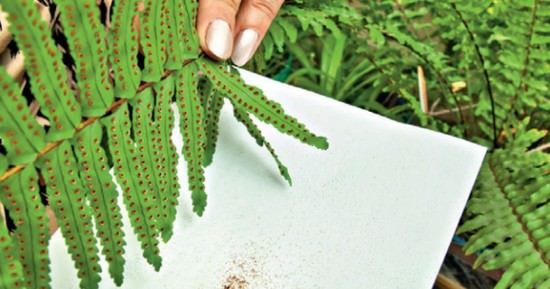

In the period from March to September, it is recommended to apply top dressing 3-4 times during each month.
Pest control
Most often, nephrolepis suffers from pests such as scale insects, whiteflies, aphids and spider mites. Insecticidal agents Aktara, Actellik and complex preparations similar in action come to the rescue.
Also read: Garden Tradescantia: characteristics of the best varieties and growing rules
Shieldworm
In nature, this plant grows in the mountains among stones or in a shady forest. In height, it can reach from 30 to 150 centimeters. The thyme has a powerful rhizome, from which leaves on long petioles form a goblet rosette. The plant develops very slowly. The name of ferns in some cases is due to their biological characteristics. The same can be said about the shitnikov. On the underside of the leaves of the plant are spore-bearing organs, covered with kidney-shaped plates, like shields. This feature gave the name to the fern. The plant is poisonous. Nevertheless, many healers use its rhizome to make medicinal potions.
General growing tips
The fern family loves frequent watering and irrigation of the leaf part with a spray bottle. It is better to put the pot in a shaded place, the soil should be slightly acidic, loose with a good drainage layer. It is important to observe the temperature regime from 18 ° С to 25 ° С. The bushes are vulnerable to attack by insecticide-fighting scale insects. The culture is fed with an organic fertilizer solution during the period of active growth. In winter, watering should be reduced and fertilized until spring.
For home cultivation, perennials from the davalliev genus are suitable, for example, the varieties fern Mnogoryadnik, Nephrolepsis, Asplenium, Oleniy horn.


Antler
Economic use of ferns
The woody species of this shrub are used for construction purposes. The root system and dead stems of ferns are involved in the formation of peat. The leafy part of the plant is used to prepare a green fertilizer that is rich in nitrogen.
From the remains of ancient plants, coal was formed, which is used as a heating material and raw material for chemical production. Since ancient times, people have used ferns of various types and names as a folk remedy for the treatment of ailments. The common ostrich, the male dwarf is used as an anthelmintic for the treatment of a sore throat.
Important! The flower sap contains a weak concentration of toxic substances. The plant should not be eaten without heat treatment.
In the Black Sea region, young shoots of fern are collected on an industrial scale. Then the raw materials are poisoned to Japan, Korea, China, where the plant is eaten after heat treatment.In the same place, starch is obtained from the fern root and used in the production of glue and beer, added to baked goods.
Use of fern for decorative purposes
Ferns of the family Multicore have a high decorative characteristic and are widely used in landscape design. The female kochedzhnik is a gorgeous bush of tall stems, which is used to decorate areas in single and group plantings.
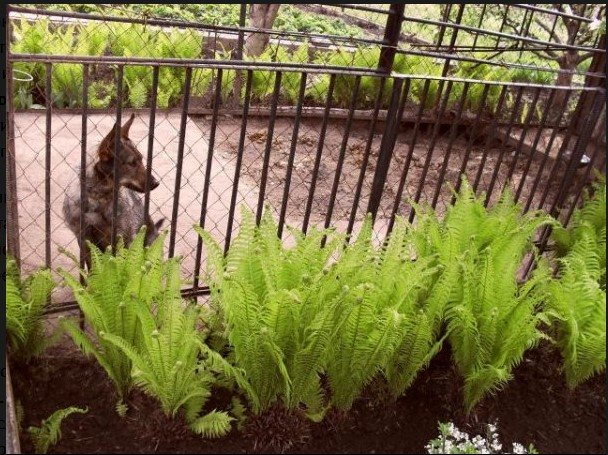

This plant has graced any garden
Curly branches of ferns complement the bouquets. Bright green colors will refresh familiar roses, chrysanthemums, gerberas. Artificial reservoirs are decorated with aquatic varieties of plants, aquariums are planted.
Indoors, bushes can be displayed on window sills, ampel forms are hung in a flowerpot on the wall or placed on a stand.
Note! Bright fern branches will be a beneficial addition to the decor of the room and garden.
Cyate family
Includes over 600 plant species. These tree ferns are found primarily in humid tropical areas. The height of plants can reach over twenty meters. The stability of the fern is possible due to the dense plexus of hard adventitious roots that make up the trunk cover.


The leaves are usually feathery and very large. Their length can be up to six meters. Some types of ferns (names and photos are presented on this page) have oval areas of airborne tissue at the point of attachment of segments to the rod of the leaf plate. They serve for gas exchange. In some plants, air-bearing areas protrude above the leaf.
Characteristics of species
Some species are decorative, others have medicinal properties, are used in cooking, there are also poisonous specimens. They are divided into aquatic and terrestrial, depending on the place of growth. Treelike - representatives of the largest group. The most common types of indoor and garden ferns are:
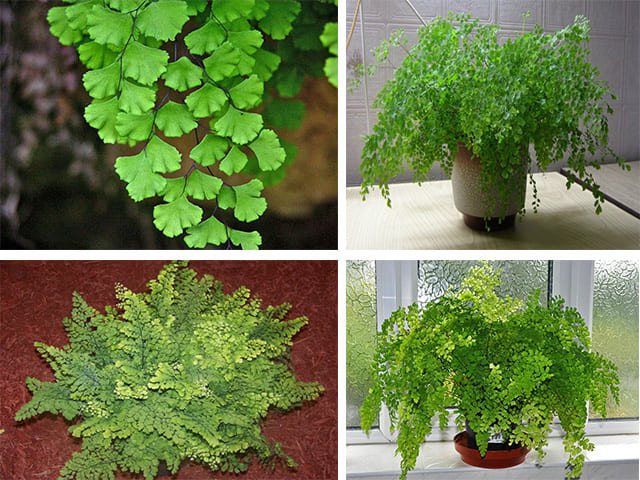

- Reniform maidenhair is a miniature species up to nine centimeters high. The leaves are rounded, with a brown dot border during the maturation of the spores. An extremely whimsical plant. It is hard to endure a change of place, position, irregular watering and waterlogging, a drop in temperature below fifteen degrees, direct sunlight. Requires a certain soil composition. It grows actively in favorable conditions: in humid air, with periodic spraying, annual transplantation. Popular varieties:
- Victoria elegans - feathery leaves of an oval or triangular shape, the length of the short wedge-shaped up to six millimeters, the stems are reddish;
- Fritz Luthi - with triangular small wedge-shaped leaves up to thirty centimeters long, forming a lush crown;
- Fragrans - characterized by rapid growth and formation of dense bushes with numerous fronds;
- Fragrantissima - the diameter of the crown of an indoor plant reaches one and a half meters, large triangular leaves reach sixty-five centimeters in length and up to thirty in width.
- Maidenhair Venus of hair - delicate, refined, with small rounded dissected leaves on thin cuttings.
- Blehnum - belongs to the family of loosestrife, united in two hundred decorative species. Leathery, palm-like frond about a meter long. The powerful rhizome turns into a shortened stem, on top of which there are lush light green leaves. Oval with elongation, deeply cut, feathery, dissected lobes. Pairwise spores are located along the main veins on the inner side. Some specimens are similar to a low palm tree due to the ability of the trunk to reach half a meter.
- Asplenium is a common indoor fern. At home, it has large leaves with a variety of species, light green in color. Short creeping rhizome with delicate scales. Leaf shape: whole, triangular, dissected, feathery, xiphoid, with wavy edges.
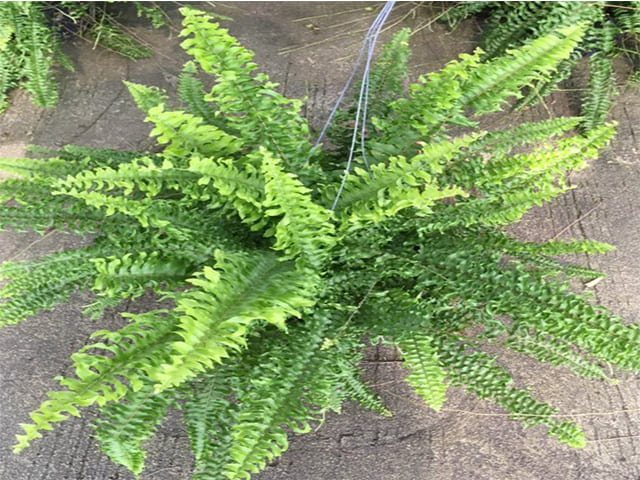

- Davallia - young leaves of a rich green color, dissected into serrated elongated sectors. More mature ones have a yellowish tint. Formed throughout the growing season. In the fall, they slow down growth, passing into a state of rest. With lengthening daylight hours, growth is restored. Differs in the presence of thickened creeping brown roots with silvery down. They grow upward, can hang from a hanging basket. The length of the roots reaches eighty centimeters.
- The centipede leaflet is a perennial, it is called the "deer tongue". Homeland - Mediterranean regions of Eurasia. Grows in rocky crevices, on limestone talus. The root has a layer of film with scales. Leathery, petioled frond gathered in a bunch up to seventy centimeters long. A sheet in the form of a belt with a voluminous central vein and a heart-shaped base. Petiole with short brownish-green hairs. Sori groups are elongated along the leaf plate, perpendicular to the central vein. The species diversity is presented with a smooth, corrugated, wavy, comb, branched, forked, curly frond edge.
- Nephrolepis sublime or Boston is the most unpretentious, compact oleander family. Includes over thirty species. Epiphytic or ground with light green decorative fronds. On the vertical rhizome there is a rosette of large short-petiolized feathery branches up to eighty-five centimeters. Scaly shoots form on the roots, which take root, form new flowers.
- Pteris - represents two hundred and fifty subtropical and tropical species. The leaves are graceful, of different sizes and contours, green, variegated (variegated) color. Unpretentious in care, prefers high humidity.
- Platycerium is an unusual genus with eighteen species, found naturally in the tropics. Grows on the trunks and branches of trees. Has two types of sheet with specific functions. The first is like a pocket for accumulating moisture, nourishing fallen leaves and insects to feed and serve as a support. There are no disputes. The second ones are outwardly spectacular, similar to the antlers of a deer. The structure comes from varieties, length up to one meter.
- The round-leaved pellet is a push-button fern with eighty species. Found in temperate, tropical, subtropical zones. It is a small bush with leathery, shiny, round dark green leaves. Creeping, scaly root. The shoots are fleecy. Petioles are not more than one millimeter.


Cultic
They are represented by large creeping stem ferns. The length of the plant, as a rule, is no more than 50 centimeters. Leaves - 4, 5-pinnate, small (up to 3 cm). The petioles are light or dark brown. Leaves not fully unfolded, covered with light brown or reddish hairs. The fern plant names of this species are as follows: Culcita coniifolia (native to the north and center of South America) and C. macrocarpa (in the Macaronesian floristic area). The number of this species is steadily declining.
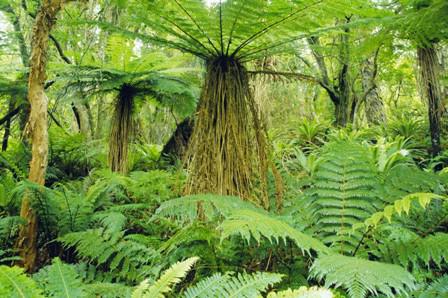

That is why the fern of this species is included in the list of protected plants in Portugal and Spain.
Salvinia
This plant is rare and needs protection. Very often, salvinia is grown specifically for landscaping aquariums. The plant can be seen in the reservoirs of botanical gardens. Outwardly, it does not look like the usual ferns. The stem of the salvinia is thin and long (about 15 cm). The leaves are collected in three. Two of them are solid, elliptical in shape with a heart-shaped base. The third sheet is underwater. It is covered with hairs and dissected into filamentary strips similar to roots.
This leaf absorbs nutrients and water.

